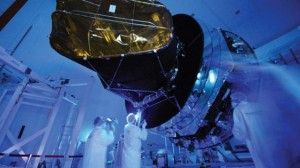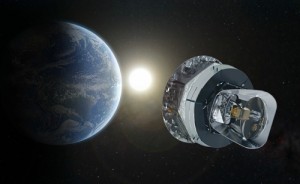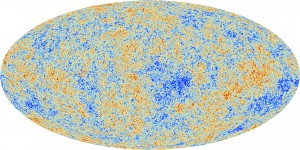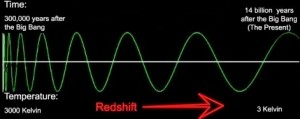Of the thousands of millions of species on this roughly 4.5 billion-year-old planet, Homo sapiens is the only species looking for the evidence of the origin of his existence. His curiosity and investigations today have led to the affirmation of the term “Big Bang,” and even further, to the point where he has been able to create a simulation of the sound of the early moments when the universe was born, seconds after Big Bang.
Although it might suggest an explosion, the term “Big Bang” refers to the moment when a hot dense universe started to expand and cool down rapidly.The following video depicts the big bang theory, based on which scientists describe the beginning of our universe:
John Cramer, a physicist at the University of Washington in Seattle has recently refined his ten-year-old idea about the possibility of re-creating the sound of the Big Bang.
Cramer’s work relied on data collected by the Planck satellite, one of the largest and most sensitive satellites ever built. This satellite can detect the millimetre and sub-millimetre fractions of wavelength and once located in space, it is directed away from the sun.

Planck satellite,
Photo from http://www.bis.gov.uk/ukspaceagency/news-and-events/2012/Jan/planck-instrument-loses-its-cool

Computer simulated picture of Planck satellite and its orientation relative to the sun and earth,
Photo from: http://www.learner.org/courses/physics/visual/visual.html?shortname=planck_standing
On Mission ESA, the Planck satellite collected the light temperature variations in all directions around it, which helped create a pattern that could be explained using the Cosmic Microwave Background Radiation concept. CMBR is defined as the uniform faint afterglow or heat residues of the big bang, reaching the earth from the sky in every direction.

Pattern created by the measured temperature variations in sky by the Planck satellite,
Photo from: http://www.esa.int/Our_Activities/Space_Science/Planck/Planck_and_the_
cosmic_microwave_background
When this cosmic background light was released billions of years ago, it was incredibly hot and bright. However, since after the big bang both time and space were stretched and the universe started to cool down, wavelengths coming from this background light got longer and longer. That’s why today these wavelengths are in the microwave section of the electromagnetic waves spectrum; hence the name Cosmic Microwave Background Radiation.

Picture representing wavelength elongation due to decrease of temperature (the redshift effect) and stretch of universe,
Photo from: http://proximacentauri360.blogspot.ca/2013/08/cosmic-microwave-background-radiation.html
Cramer finally converted planck’s data into sound waves and scaled up the obtained frequencies by a large factor so that the sound frequencies could fall within the human’s hearing range (20-20000 Hz).
In a story he wrote in Analog magazine about his investigations, Cramer said:
“The original sound waves were not temperature variations, though, but were real sound waves propagating around the universe,… “
Science students like me might ask: Sound is a mechanical wave and it would need a medium to be able to propagate through space. In what way is that statement justified?
Cramer argues the early universe was dense enough that at that state, sound waves could travel through space and the length of these waves would be so short that again it would fall well below the human’s hearing threshold.
In the end, I invite you to listen to a 100-second version of the sound of the birth of universe:
http://youtu.be/GJyJ8Xjllzk
– Shamim Hortamani
